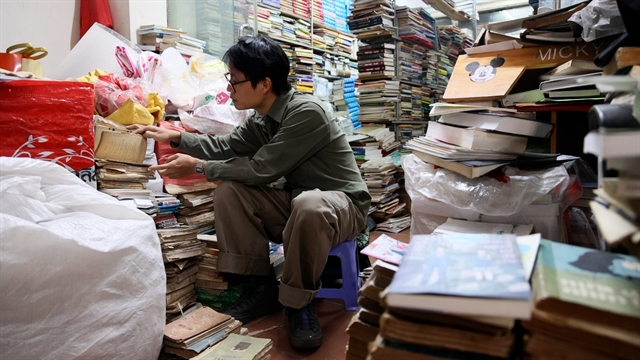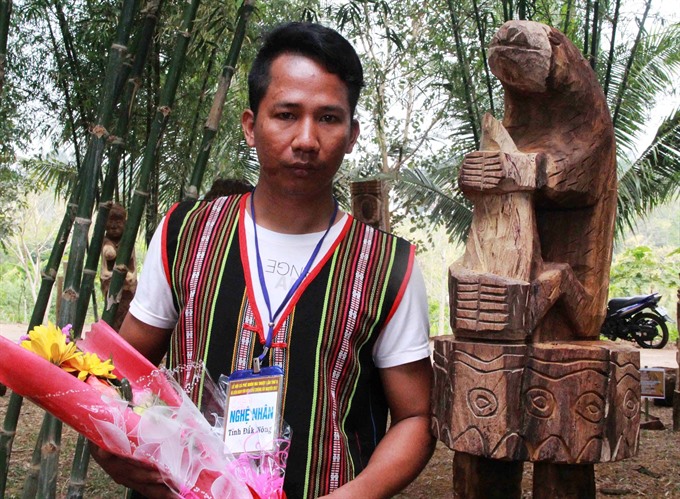 Life & Style
Life & Style

" />A 26-year-old artist from Đắk Nông Province won first prize for his wood sculpture at the Tây Nguyên (Central Highlands) Folk Statue and Carving Contest in Buôn Ma Thuột City this week.
 |
| Y Ân Byă and his wooden sculpture Gấu Bẻ Măng (Bear Eats Bamboo), which won first prize at the Tây Nguyên (Central Highlands) Folk Statue-Carving Contest held in Buôn Ma Thuột City earlier this week. — Photo nhandan.com.vn |
BUÔN MA THUỘT — A 26-year-old artist from Đắk Nông Province won first prize for his wood sculpture at the Tây Nguyên (Central Highlands) Folk Statue and Carving Contest in Buôn Ma Thuột City this week.
Y Ân Byă used trunks of fruit trees to carve his sculpture Gấu Bẻ Măng (Bear Eats Bamboo) to emphasise the natural world.
He said that he hoped his style would attract visitors who have no knowledge of traditional Central Highlands art.
“All of the contest’s artists worked hard to depict their culture and lifestyle,” said Byă, adding that artworks depict their peoples’ past, present and future.
Dozens of wooden sculptures created by the 70 participants, mostly unknown artists living in the region, are on display at the Kotam Eco-Tourist Park in Kotam Village in Buôn Ma Thuột City’s Ea Tu Commune.
The exhibition is part of the sixth Buôn Ma Thuột Coffee Festival and Cồng Chiêng (gongs) Cultural Festival 2017, which opened in Buôn Ma Thuột City on March 11.
Among the event’s highlights were works by Y Thái Êban of Đắk Lắk and Ksor Krôh of Gia Lai, who shared the second prize.
“I like Êban’s Thầy Cúng Và Người Đàn Bà Phụ Cúng (The Wizard and His Female Assistant) and Krôh’s Đôi Vợ Chồng (Married Couple) because the two works are vibrant and talk to those who see them,” said visitor Trần Thị Xuân of HCM City.
Organised by the Đắk Lắk Province’s People’s Committee, the contest provided artists from remote provinces, especially ethnic minorities, a place to create and display their work. — VNS